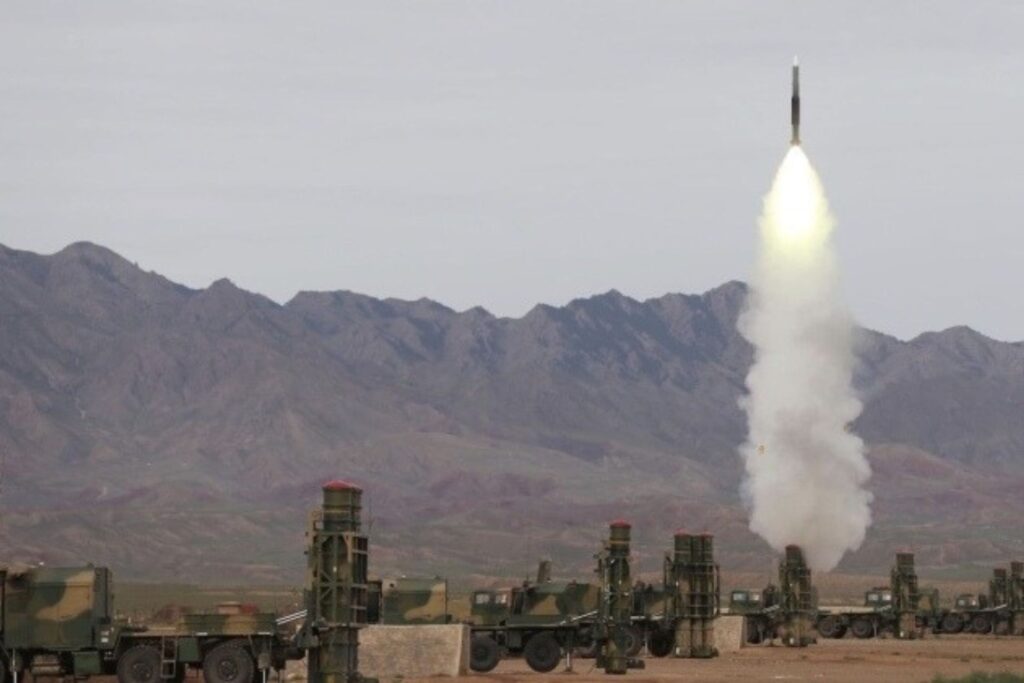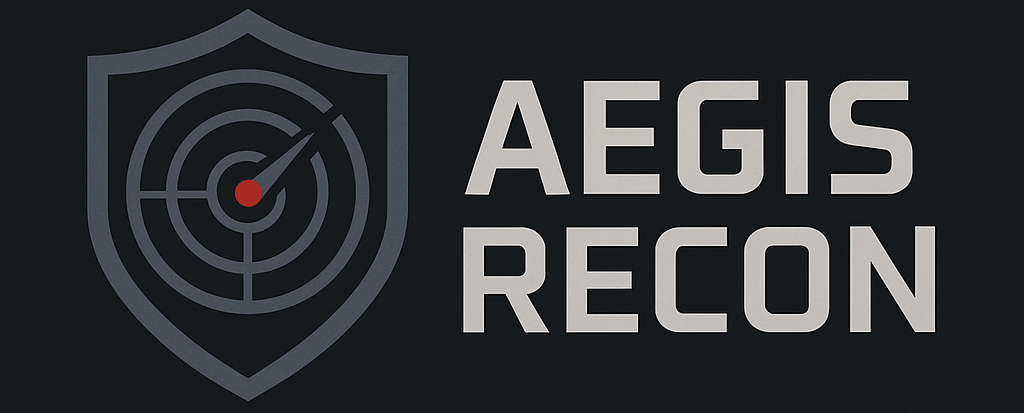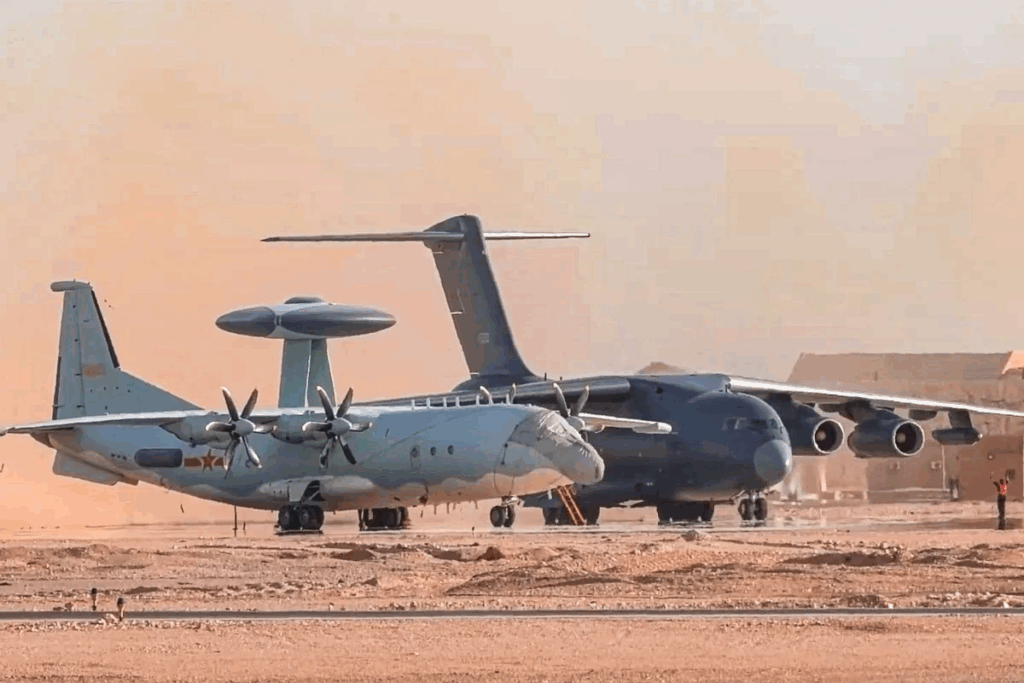Egypt’s recent decision to acquire the HQ-9B long-range surface-to-air missile (SAM) system from China marks a profound strategic pivot in its defense procurement policy. For decades, Cairo has meticulously balanced its military acquisitions between Western suppliers, primarily the United States, and Russian manufacturers, a legacy of its Cold War alignments. This groundbreaking shift towards a major Chinese air defense system signals not only a diversification of sources but also a calculated move towards greater strategic autonomy, potentially reshaping regional power dynamics and Egypt’s defensive capabilities against a range of modern aerial threats posed by its neighbors.
A New Chapter in Egyptian Defense Procurement: HQ-9B Acquisition
The confirmation of Egypt’s HQ-9B purchase, widely reported in late May 2025 following joint “Eagles of Civilization 2025” exercises with the Chinese Air Force, underscores a deliberate effort by Cairo to reduce its reliance on traditional arms providers. For many years, Egypt has been the second-largest recipient of U.S. military aid, totaling around $1.3 billion annually, which largely mandates the procurement of American equipment. Simultaneously, it has maintained robust defense ties with Russia, acquiring sophisticated platforms like the S-300VM (SA-23 Gladiator) long-range SAM system, MiG-29M/M2 fighters, and Ka-52 attack helicopters. This dual-source strategy aimed to prevent over-dependence on any single power, but often came with political conditionalities or limitations on technology transfer, particularly from the U.S.
The move to the HQ-9B from China offers several key advantages for Egypt:
- Diversification and Strategic Autonomy: By adding China as a primary defense supplier, Egypt gains greater leverage in negotiations with both Washington and Moscow. It ensures that no single nation can exert undue political pressure by threatening to cut off arms supplies or spare parts. This “freedom” allows Egypt to pursue its national interests more independently on the regional and international stage.
- Reduced Political Conditionality: Chinese arms sales are generally perceived as having fewer political strings attached compared to those from Western nations, particularly concerning human rights or geopolitical alignments. This provides Egypt with a more unencumbered path to modernizing its military.
- Potential for Technology Transfer: China has historically been more willing to engage in technology transfer and even licensed production for its defense clients, particularly those aligned with its Belt and Road Initiative (BRI). While the extent of technology transfer for the HQ-9B remains unknown, it could offer Egypt opportunities to enhance its indigenous defense industry, a long-term goal for Cairo.
- Cost-Effectiveness: Chinese military hardware is often presented as a more cost-effective alternative to comparable Western or Russian systems, offering advanced capabilities at a potentially lower price point. This is crucial for Egypt, which, despite its strategic importance, faces ongoing economic challenges.
- Integrated Solutions: China offers integrated defense solutions, from drones and fighters to air defense systems, often designed to work seamlessly together. This can simplify logistics and training compared to integrating disparate systems from multiple international vendors. Egypt has already acquired Chinese Wing Loong drones and reportedly J-10CE fighter jets, making the HQ-9B a natural fit within a burgeoning Chinese-Egyptian defense ecosystem.
The HQ-9B acquisition complements Egypt’s existing formidable and diverse air defense network, which includes a mix of Russian (S-300VM, Buk-M2, Tor-M2, Pechora-2M), American (Patriot, HAWK, Avenger), and European (IRIS-T SLM, Crotale) systems. The HQ-9B will likely fill a critical gap by providing a long-range, modern capability that is fully interoperable with other Chinese systems and, theoretically, can be integrated into Egypt’s broader command-and-control infrastructure.
The HQ-9B’s Capabilities: A Closer Look
The HQ-9B is the latest export variant of China’s premier long-range SAM system, designed to detect, track, and engage a wide array of aerial targets at significant distances and altitudes. Its performance specifications make it a formidable addition to any air defense arsenal.
At its core, the HQ-9B system relies on a sophisticated suite of radars:
- HT-233 Engagement Radar: This multi-function passive electronically scanned array (PESA) radar serves as the primary fire control radar. It’s capable of simultaneously tracking up to 100 targets and engaging 8 to 10 targets concurrently. It provides continuous wave (CW) illumination for the missile’s terminal guidance.
- Search Radars: The system typically integrates with broader early warning and surveillance radars, such as the Type 120 low-altitude search radar and potentially the YLC-20 passive detection radar (which can detect stealth aircraft by analyzing their electromagnetic emissions rather than active radar returns). This layered radar approach enhances detection capabilities across different altitudes and against various types of threats, including those employing electronic countermeasures.
The HQ-9B missile itself is a two-stage, solid-fueled interceptor, with a reported maximum speed exceeding Mach 4. Its most significant upgrade in the ‘B’ variant is its extended range, now purportedly between 250 to 300 kilometers for engaging aircraft. It also boasts a high engagement altitude of up to 50 kilometers. The missile uses a combination of inertial guidance for mid-course flight, receiving updates via a data link from the ground radar, and semi-active radar homing (SARH) during the terminal phase. There are also indications that newer HQ-9B variants may incorporate an active radar homing (ARH) seeker for improved “fire-and-forget” capabilities, allowing the launching unit to disengage or engage other targets once the missile is locked on.
The HQ-9B is designed to intercept a diverse range of aerial threats:
- Fixed-wing Aircraft: From fighter jets and bombers to transport aircraft and airborne early warning (AEW) platforms.
- Cruise Missiles: Including low-flying, high-speed anti-ship missiles and land-attack cruise missiles. Its effectiveness against supersonic, low-altitude cruise missiles, however, has been recently challenged, as discussed in the context of Pakistan’s “Operation Sindoor” in May 2025, where BrahMos missiles reportedly evaded detection or interception by HQ-9 batteries.
- Unmanned Aerial Vehicles (UAVs): Ranging from large surveillance drones to smaller, more agile combat UAVs.
- Tactical Ballistic Missiles (TBMs): While not a dedicated anti-ballistic missile (ABM) system, the HQ-9B possesses a limited capability to engage tactical ballistic missiles, with a reported intercept range of up to 30 km and altitude up to 25 km, typically in their terminal phase.
The entire HQ-9B system is highly mobile, mounted on heavy-duty Taian TAS-5380 8×8 truck chassis for its launchers, radars, and command vehicles. This mobility allows for rapid deployment, redeployment, and increased survivability against counter-battery fire. A standard battery typically comprises a command vehicle, several radar vehicles, and multiple launcher vehicles, each carrying four missiles. The system is designed for quick setup and tear-down, enabling a “shoot-and-scoot” capability crucial for modern air defense.
Performance of HQ-9B in Conflict with Neighbors: A Shifting Air Defense Landscape
Egypt shares borders with several nations, each possessing varying levels of air power, making the HQ-9B a significant factor in any potential regional conflict scenario.
Threats from Libya and Sudan:
Both Libya and Sudan are in states of internal conflict or political instability, leading to fragmented or degraded air forces.
- Libya: The various factions in Libya possess a mix of older Soviet-era aircraft (MiG-21, MiG-23, Su-22, Su-24) and some more modern, but limited, acquisitions like a few MiG-29s and potentially Su-35s operated by external actors or proxies. Drones also play a significant role. The HQ-9B would comfortably dominate this airspace. Its long range would create a substantial no-fly zone, effectively neutralizing any conventional aerial threat from Libya. Even older aircraft attempting low-altitude approaches would face a formidable challenge.
- Sudan: The Sudanese Air Force is primarily composed of older Chinese (J-7, A-5) and Russian (MiG-29, Su-25) combat aircraft, many of which suffer from maintenance issues and low operational readiness due to ongoing internal conflicts. The HQ-9B would represent an overwhelming technological superiority, easily detecting and engaging any of Sudan’s fixed-wing aircraft or older helicopters from a safe distance, providing a robust shield for Egyptian territory and strategic interests along its southern border.
Threats from Ethiopia (GERD Context):
Ethiopia, while not a direct military threat in the same vein as historical conflicts, has a growing military, and tensions with Egypt persist over the Grand Ethiopian Renaissance Dam (GERD).
- Ethiopian Air Force Assets: Ethiopia operates a mix of Russian-origin aircraft, including Sukhoi Su-27s, Su-30Ks (a limited number), and older MiG-21s/23s, along with attack helicopters and a growing inventory of Turkish (Bayraktar TB2, Akıncı) and Chinese (Wing Loong II) drones.
- HQ-9B Performance: The HQ-9B would provide Egypt with a significant defensive advantage against Ethiopia’s Su-27s and Su-30s, capable of engaging them at standoff ranges far from Egyptian airspace. Its ability to counter drones would also be critical, given Ethiopia’s increasing reliance on UAVs. While Ethiopian pilots are skilled, the HQ-9B’s range and multi-target engagement capability would make any aerial approach towards Egyptian airspace extremely hazardous for the Ethiopian Air Force, acting as a powerful deterrent in the context of the GERD dispute.
Threats from Israel:
While a direct military confrontation between Egypt and Israel is highly improbable due to their peace treaty and strong strategic ties with the U.S., Israel undeniably possesses the most advanced air force in the region. Evaluating the HQ-9B against Israeli assets is a crucial benchmark for its true capabilities.
- Israeli Air Force (IAF) Assets: The IAF operates a cutting-edge fleet including F-35I “Adir” stealth fighters, highly upgraded F-15I “Ra’am” strike eagles, and F-16I “Sufa” multirole fighters. These aircraft are equipped with advanced precision-guided munitions (PGMs), sophisticated electronic warfare (EW) suites, and highly trained aircrews. Israel also possesses formidable stand-off missiles and a significant drone fleet.
- HQ-9B Performance Against Israeli Assets:
- Against F-15I/F-16I: The HQ-9B’s long range and multi-target capability would pose a serious threat to non-stealthy Israeli F-15Is and F-16Is operating within its engagement envelope, particularly if they attempt deep penetration without robust EW support. However, Israeli aircraft are renowned for their highly advanced EW capabilities, which could potentially degrade the HQ-9B’s radar performance, complicating targeting.
- Against F-35I: This is the ultimate test. The F-35I is a fifth-generation stealth fighter designed specifically to penetrate highly defended airspace. While China claims its air defense systems have “anti-stealth” capabilities, the effectiveness of the HQ-9B’s PESA radar against the F-35’s very low observable (VLO) signature is debatable. It might be able to detect the F-35 at significantly shorter ranges than conventional aircraft, reducing its effective engagement zone. Furthermore, the F-35’s advanced electronic attack capabilities could potentially jam or spoof the HQ-9B’s radar and guidance systems. Even if detected, engaging an F-35 that is actively maneuvering and employing countermeasures would be an immense challenge for any current SAM system not explicitly designed for 5th-generation threat engagement. The HQ-9B would significantly complicate IAF operations, but would not render them impossible.
In a conflict scenario, the HQ-9B would provide Egypt with an effective long-range shield against most conventional air forces in the region. Its mobility would allow for flexible deployment to protect critical infrastructure or deployed forces. However, as seen in the recent “Operation Sindoor” in Pakistan, the HQ-9B’s performance against high-speed, low-altitude cruise missiles and sophisticated electronic warfare remains a point of concern for analysts. Egypt would likely need to integrate the HQ-9B deeply with its existing diverse air defense network, leveraging its layered approach to maximize effectiveness and mitigate individual system vulnerabilities.

The Unpredictable Ripple: Israeli Aggression Towards Iran
The Middle East is a geopolitical tinderbox, and the potential for direct Israeli aggression towards Iran carries immense implications for regional stability. While Egypt would not be a direct party to such a conflict, the HQ-9B’s presence and Egypt’s strategic posture could experience indirect effects.
- Heightened Regional Airspace Vigilance: An Israeli strike on Iran, or Iranian retaliation, would immediately put all regional air defenses on high alert. Even if Israeli aircraft chose routes far from Egyptian airspace (e.g., over Saudi Arabia or the Red Sea), any escalation would necessitate Egypt’s HQ-9B and other air defense units to be at peak readiness. Monitoring transiting aircraft, unidentified aerial phenomena, or potential stray missiles would become critical.
- Intelligence Gathering and Technological Insights: Should an Israel-Iran conflict involve significant air and missile exchanges, it would provide a real-world test for various air defense systems and strike packages. Egypt, possessing the HQ-9B and other Russian/American systems, would be keenly observing. The performance of Israeli stealth aircraft and EW against Iranian (potentially Chinese-supplied or domestically developed) air defenses, or the performance of Iranian missiles against Israeli defenses, would yield invaluable insights. This could inform future upgrades or procurement decisions for Egypt’s own forces, including potential enhancements or limitations of its HQ-9B system.
- Pressure on Supply Chains and Spares: A prolonged conflict could strain global arms supply chains. If China were to face increased demand from Iran (if Tehran also sought Chinese air defense solutions) or if sanctions were to intensify, it could theoretically impact the timely delivery of HQ-9B spares or additional missiles to Egypt, although China’s robust defense industry might be able to manage this.
- Pakistan’s Experience and Egypt’s Lessons: The reported underwhelming performance of Pakistan’s HQ-9B in “Operation Sindoor” against advanced Indian cruise missiles and EW would serve as a critical case study for Egypt. If similar Chinese systems in Iran were to face severe challenges from Israeli air power, it would highlight the need for Egypt to invest further in comprehensive electronic warfare capabilities, advanced sensor fusion, and possibly look beyond purely Chinese solutions for critical components, or seek deeper integration with its existing Western and Russian systems. This would underscore that even advanced SAMs like the HQ-9B are just one component of a layered, resilient air defense.
- Maintaining Neutrality: Egypt’s primary objective would be to maintain strict neutrality and protect its borders from any spillover effects, including accidental incursions or the movement of destabilizing elements. The HQ-9B would contribute to enforcing this neutrality by enabling robust airspace control.
In short, Egypt’s strategic decision to acquire the HQ-9B marks a significant milestone in its military modernization, offering greater flexibility and diversifying its defense partnerships away from exclusive reliance on the U.S. and Russia. This advanced Chinese system provides a formidable shield against most conventional aerial threats from its neighbors, particularly those with less sophisticated air forces like Libya, Sudan, and Ethiopia, significantly enhancing Egypt’s defensive posture in its immediate neighborhood. While its performance against advanced, stealthy aircraft and sophisticated electronic warfare from a highly capable adversary like Israel remains a complex challenge, the HQ-9B undeniably strengthens Egypt’s overall air defense capabilities. The broader implications of regional conflicts, such as potential Israeli aggression towards Iran, would primarily reinforce Egypt’s need for vigilant airspace control and robust intelligence gathering, potentially influencing its ongoing assessment and refinement of its multi-layered air defense strategy. The Egypt HQ-9B partnership signifies a new era of geopolitical maneuvering and military self-reliance for Cairo in an increasingly volatile region.



